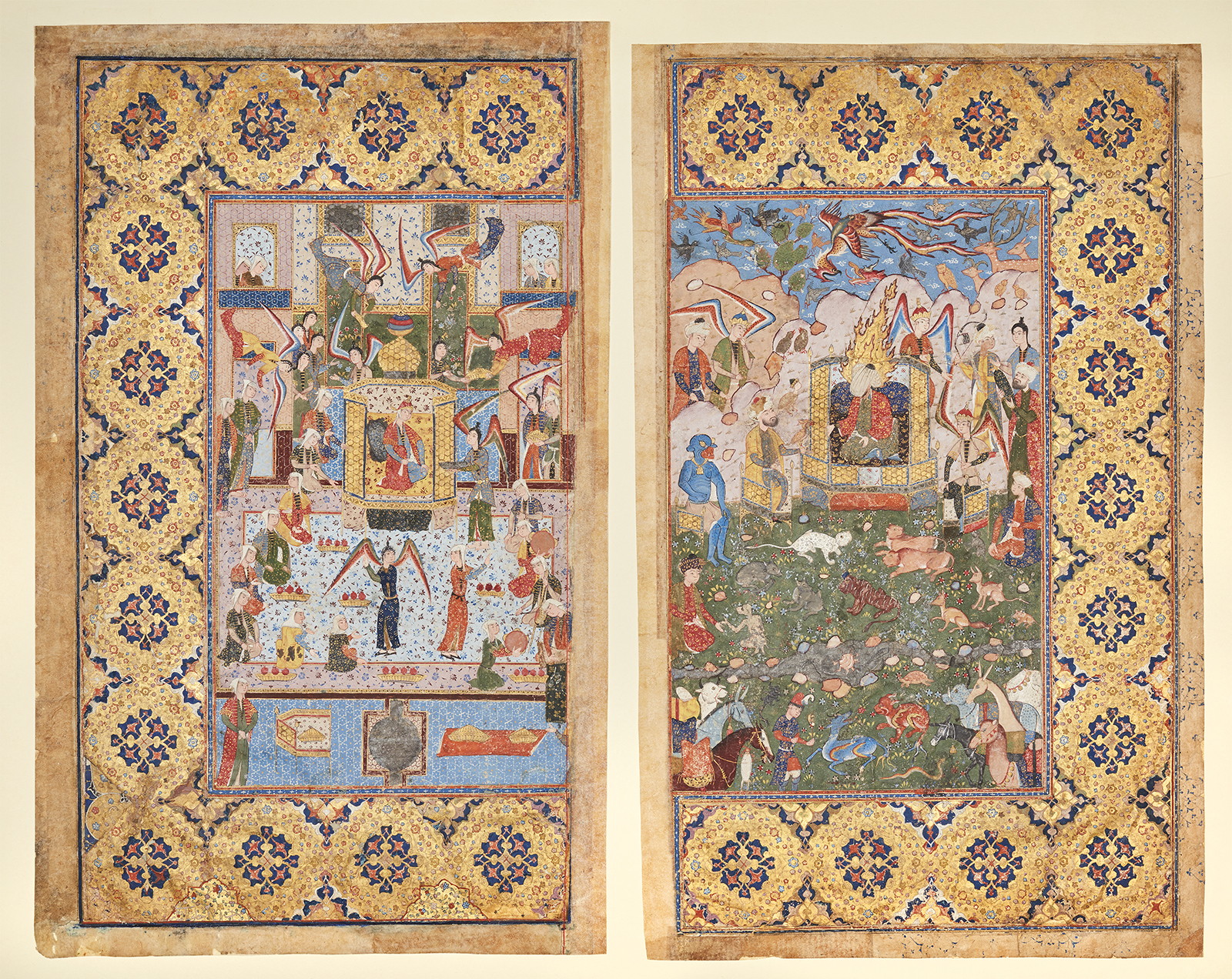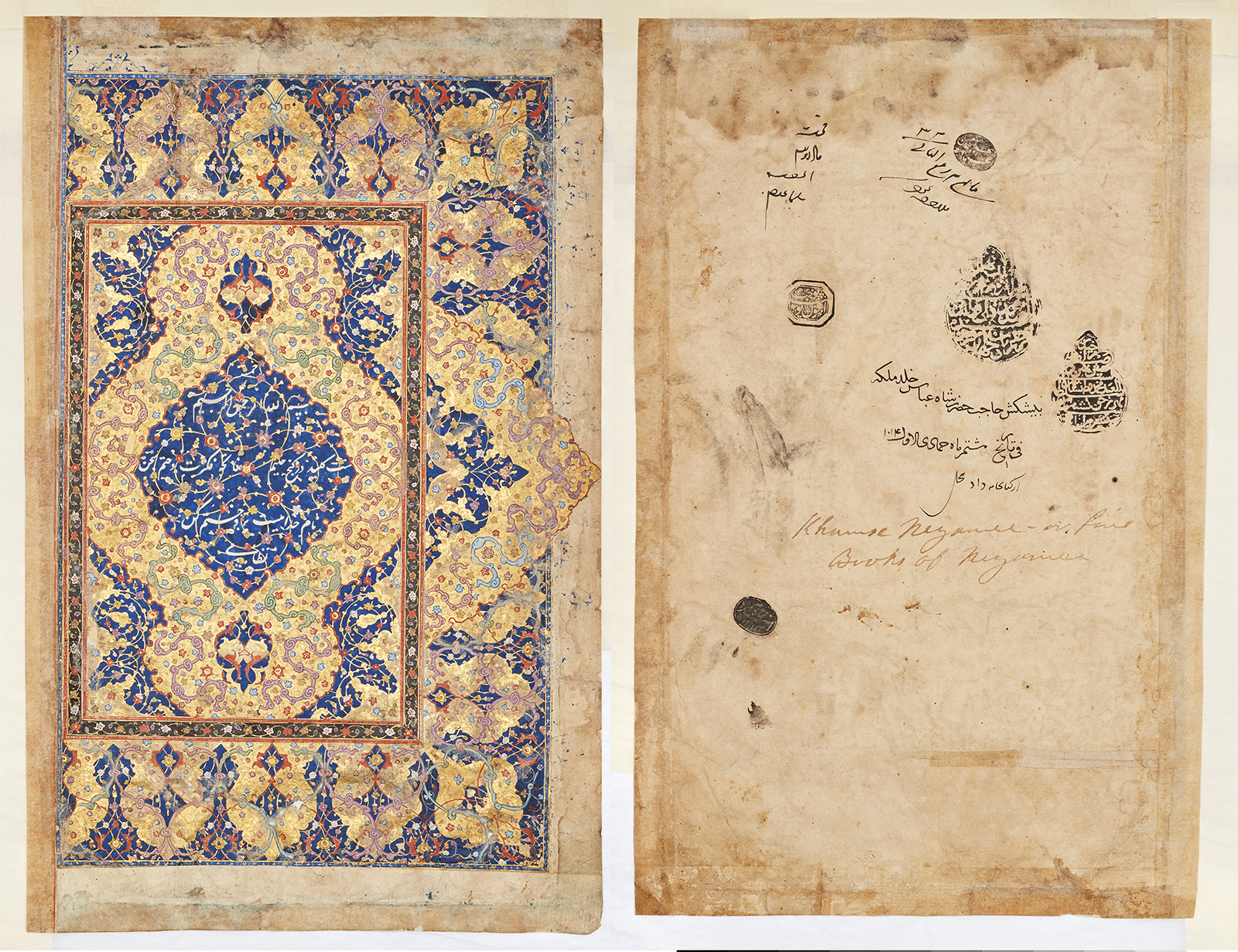Click on the image to zoom
King Solomon (Sulayman) and the Queen of Sheba (Belqis) Enthroned
Opening double page frontispiece from a manuscript of Persian poetry (probably Nizami’s Khamseh (Quintet))
- Accession Number:AKM410
- Place:Iran
- Dimensions:33.5 x 21 cm
- Date:ca. 1560–1570
- Materials and Technique:ink, opaque watercolour and gold on paper
Islamic literature often used Old and New Testament figures as examples of virtue. This painting depicts Solomon. To many Muslims, King Solomon (shown here with his wife, the Queen of Sheba) was the perfect image of the ideal ruler. Invested with divine support and endowed with supernatural gifts, Solomon held power over living beings as well as over natural forces.
Islamic literature often used Old and New Testament figures as examples of virtue. This painting depicts Solomon. To many Muslims, King Solomon (shown here with his wife, the Queen of Sheba) was the perfect image of the ideal ruler. Invested with divine support and endowed with supernatural gifts, Solomon held power over living beings as well as over natural forces.
Note: This online resource is reviewed and updated on an ongoing basis. We are committed to improving this information and will revise and update knowledge about this object as it becomes available.




